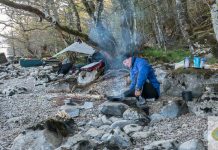Climbing Lobuche Peak is a thrilling and challenging adventure, requiring careful preparation and proper planning. To ensure a successful and safe ascent, here are detailed tips to guide you through the climb:
- Physical Fitness and Training:
- Engage in regular cardiovascular exercises, strength training, and endurance-building activities to prepare your body for the demanding trek and climb.
- Include activities like hiking, running, stair climbing, and weightlifting to build overall fitness and stamina.
- Acclimatization:
- Allow sufficient time for acclimatization to high altitudes. Plan your itinerary with gradual ascents and rest days at higher elevations to minimize the risk of altitude sickness.
- Listen to your body and communicate any symptoms of altitude sickness to your guide or team members.
- Climbing Skills:
- Familiarize yourself with basic mountaineering techniques such as using crampons, ice axes, and ropes.
- If you lack experience, consider taking a mountaineering course or hiring a guide with expertise in technical climbing.
- Choosing the Right Season:
- The best time for Lobuche Peak climbing is during the pre-monsoon (spring) season (April-May) and post-monsoon (autumn) season (September-November) when the weather is more stable.
- Climbing Permits and Logistics:
- Obtain the necessary climbing permits from the Nepal Mountaineering Association (NMA) and any other required permits.
- Choose a reputable trekking agency that specializes in Lobuche Peak climbing. Ensure they have experienced guides and handle logistics efficiently.
- Climbing Gear and Equipment:
- Prepare a comprehensive list of essential climbing gear, including mountaineering boots, crampons, ice axes, harness, helmet, ropes, and other technical equipment.
- Rent climbing gear in Kathmandu or bring your own, ensuring that all gear is in excellent condition.
- Hydration and Nutrition:
- Stay well-hydrated during the climb by drinking plenty of water. Carry a water purification system to ensure a safe water supply.
- Consume high-energy foods and snacks to maintain energy levels. Ensure a balanced diet with adequate protein and carbohydrates.
- Responsible Climbing:
- Practice “Leave No Trace” principles, respecting the mountain environment, and minimizing your impact on the ecosystem.
- Dispose of waste properly and refrain from littering.
- Weather Awareness:
- Stay informed about weather conditions and be prepared to adjust your plans accordingly. Bad weather can significantly impact your climbing schedule.
- Teamwork and Communication:
- Work as a team with your climbing partners and guides. Effective communication is vital for safety and success.
- Discuss and understand each member’s roles and responsibilities during the climb.
- Safety Measures:
- Follow your guide’s instructions and safety protocols at all times.
- Wear appropriate safety gear, such as a helmet and harness, during technical sections.
- Acclimatization Climbs:
- Plan acclimatization climbs to nearby peaks or high points before attempting the summit push. It helps your body adjust to higher altitudes.
- Summit Day Strategy:
- Start the summit attempt early in the morning to take advantage of stable weather conditions and avoid afternoon storms.
- Pace yourself and take regular breaks to conserve energy during the long ascent.
- Summit Celebration and Descent:
- Celebrate your achievement at the summit and take in the breathtaking views.
- Begin the descent promptly to avoid being caught in deteriorating weather conditions.
- Respect Local Culture:
- Respect the local Sherpa culture and customs. Be polite and considerate to the people and communities you encounter during the climb.
By following these tips and guidelines, you can maximize your chances of a successful Lobuche Peak climbing expedition while ensuring your safety and the preservation of the pristine mountain environment. Remember that climbing at high altitudes is a serious endeavor and requires adequate preparation and careful decision-making.







